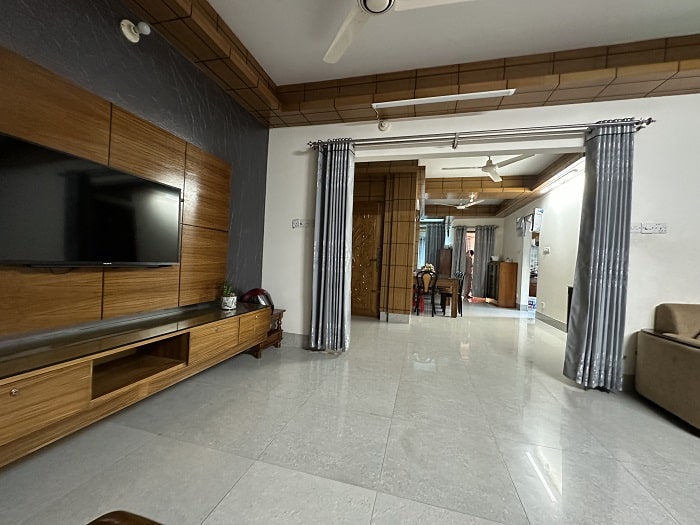In 2024, having a well-designed home will be the hallmark of post-pandemic fashion. Now that the world is allowing people to open up and invite others back into their homes, people are more likely than ever to consider redesigning their homes to meet the whims and fancies more akin to luxurious celebrity cribs than standard family homes.
There are a number of elements that are common to all designer homes that you might want to consider having in your home, for example, stone floors, lots of greys, and the use of mixed materials like metal and concrete. This article will discuss how to update your home so it matches the new era of home design.
1. Functionality
When it comes to functionality, homeowners need to consider the use of their home and who is living inside the four walls. It’s more likely than ever that homes will be a place where multiple generations converge, and multiple generations need their own space. Thanks to the changes in working patterns since the pandemic, homes are increasingly being used as home offices as well as somewhere to rest your head.
When it comes to layout and decor, designer homes generally tend to prioritise functionality over aesthetics. This push to make homes more usable and livable is not always prized by homeowners, but in high-class design, aesthetics take a backseat to the functionality and the use of the space.
Some examples of how to make the most out of space include using lighting to the best of its ability, whether it be natural lighting from my window or a designer lamp. Another way would be to use multifunctional furniture, for example, a footstool that can double as a spare bed.
2. Colour and Texture
The use of colour and texture in a designer home can greatly influence its overall aesthetic. Designers are experts at using colour to create a particular mood or atmosphere in a space.
For instance, neutral colours like beige or grey limestone flooring can establish a calm and serene environment, while bolder hues like red or blue can inject energy and vibrancy into a room.
In addition to colour, designers often mix textures and materials to add depth and visual interest to a space. Combining different elements, such as a soft rug with a sleek metal coffee table or a velvet sofa with a concrete accent wall, can create a dynamic and sophisticated look that keeps the eye moving and engaged.
3. Statement Pieces
Statement pieces are a crucial component of designer homes, as they serve as focal points that grab attention and elevate the overall design. These standout items can be anything from an eye-catching piece of art to a uniquely shaped piece of furniture or a dramatic lighting fixture.
Incorporating statement pieces into your home design can transform a space by adding visual interest and character.
For example, a large, vibrant painting can bring life to a neutral-toned living room, while an ornate chandelier can add elegance and grandeur to a dining area. The key is to choose statement pieces that not only complement the style and theme of the space but also reflect your personal taste and preferences.
4. Personal Touches
Designer homes always incorporate personal touches to create a unique and welcoming atmosphere. These individual elements help to reflect the homeowner’s personality and style, making the space feel more like a home than a showroom. Incorporating personal touches can involve using decor items and accessories that hold sentimental value or showcase your interests, such as family photos, travel souvenirs, or a collection of vintage books.
Little elements, such as patterned cushions or a humorous piece of wall art, may have a big impact on the overall mood of the area, making it feel more comfortable and inviting.
5. Eclectic Fusion: Merging Styles and Cultures
In the realm of designer homes, a daring and innovative approach often emerges. This year it is the art of eclectic fusion. This creative design philosophy thrives on blending different styles, periods, and cultures into a harmonious, multifaceted living space.
By combining different things, a homeowner can make a truly unique space that tells a story, pushing against traditional boundaries and giving life to every corner of the house.
- Juxtaposition
The first step in achieving a successful eclectic fusion is to be unafraid of combining seemingly disparate styles. For instance, a minimalist modern living room could be imbued with character by juxtaposing sleek lines and monochromatic colours with the warmth of rustic wooden beams and an antique Persian rug. The result is a space that embodies a certain tension and excitement as the contrasting elements dance together in an unexpected yet delightful symphony.
- Global Inspiration
Global inspirations also play a significant role in this design approach, as they add a layer of cultural richness and intrigue to the space. Think of incorporating vibrant Moroccan textiles, intricate Indian wood carvings, or the sleek simplicity of Japanese Zen aesthetics. By layering these cultural elements together, one can craft an interior that serves as a canvas for the world’s most stunning artistic expressions, melding them into a cohesive whole that exudes a sense of worldliness and sophistication.
- Colour
Colour is another powerful tool in the eclectic fusion toolbox. Daring and bold colour choices can create a dynamic atmosphere, where each hue tells a story and adds to the overall narrative of the space. Consider using deep jewel tones, such as emerald green or amethyst purple, alongside more muted, earthy shades to establish a sense of balance and harmony. These vivid colours can be tempered with neutrals, like soft greys or warm beiges, to ensure that the space feels grounded and inviting.
- Texture
Texture, too, plays a vital role in this design philosophy. The interplay of diverse materials, such as the roughness of raw brick against the smoothness of polished marble or the sheen of metal juxtaposed with the softness of a luxurious velvet sofa, creates a sensory experience that keeps the eye engaged and the mind stimulated.
The secret lies in achieving a careful balance, ensuring that no single texture or material overwhelms the space but rather contributes to the dynamic tapestry that is the eclectic fusion.
- Attention To Detail
Finally, the key to mastering this design approach is to exercise a discerning eye and to edit thoughtfully. It is essential to avoid clutter and chaos, as these can detract from the desired aesthetic. The idea is to create an environment that feels curated rather than haphazard – a visual symphony as opposed to a cacophony of discordant notes.











Leave a Review